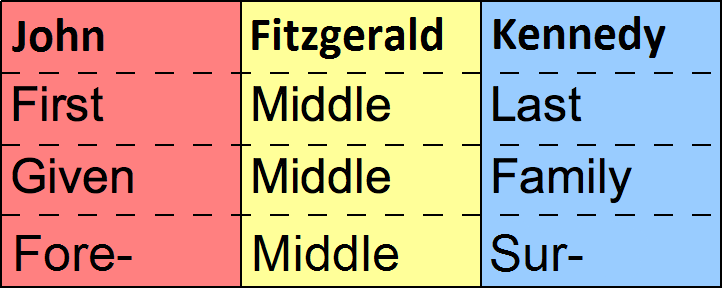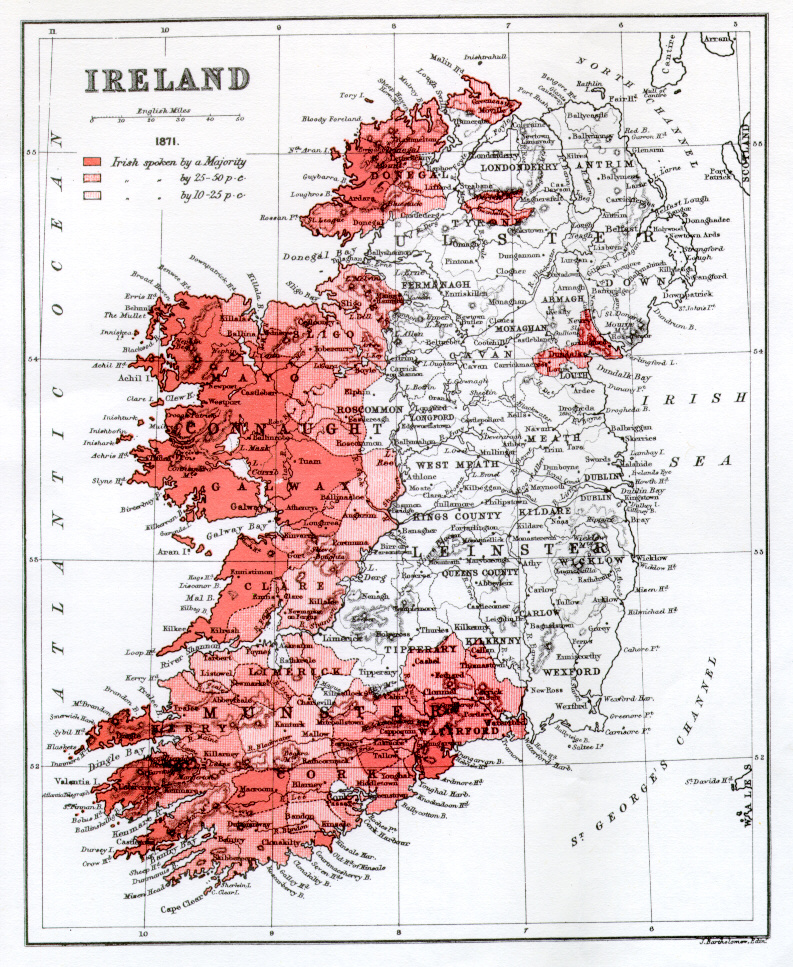|
Mac Sitric
''Mac Sitric'' is a masculine surname in the Irish language. The name translates into English as "son of ''Sitreac''". The surname originated as a patronym, however it no longer refers to the actual name of the bearer's father. The form ''Nic Sitric'' is borne by unmarried females; the forms ''Bean Mhic Sitric'' and ''Mhic Shitric'' are borne by married females. A variant form of ''Mac Sitric'' is ''Mag Sitric''; the feminine forms of this surname are ''Nig Sitric'', ''Bean Mhig Sitric'', and ''Mhig Sitric''. All these Irish surnames have various Anglicised forms. Etymology ''Mac Shitric'' translates into English as "son of ''Sitreac''". A variant form of the surname is ''Mag Sitric''. These surnames originated as patronyms, however they no longer refer to the actual name of the bearer's father. The name ''Sitreac'' is a Gaelic derivative of the Old Norse ''Sigtryggr''. This Old Norse personal name is composed of two elements: the first, ''Sig-'', means "victory"; the second eleme ... [...More Info...] [...Related Items...] OR: [Wikipedia] [Google] [Baidu] |
Gaelic Type
Gaelic type (sometimes called Irish character, Irish type, or Gaelic script) is a family of Insular script typefaces devised for printing Classical Gaelic. It was widely used from the 16th until the mid-18th century (Scotland) or the mid-20th century (Ireland) but is now rarely used. Sometimes, all Gaelic typefaces are called ''Celtic'' or ''uncial'' although most Gaelic types are not uncials. The "Anglo-Saxon" types of the 17th century are included in this category because both the Anglo-Saxon types and the Gaelic/Irish types derive from the insular manuscript hand. The terms ''Gaelic type'', ''Gaelic script'' and ''Irish character'' translate the Irish phrase (). In Ireland, the term is used in opposition to the term , Roman type. The Scottish Gaelic term is (). (–1770) was one of the last Scottish writers with the ability to write in this script, but his main work, , was published in the Roman script. Characteristics Besides the 26 letters of the Latin alphabet, ... [...More Info...] [...Related Items...] OR: [Wikipedia] [Google] [Baidu] |
Surnames
In some cultures, a surname, family name, or last name is the portion of one's personal name that indicates one's family, tribe or community. Practices vary by culture. The family name may be placed at either the start of a person's full name, as the forename, or at the end; the number of surnames given to an individual also varies. As the surname indicates genetic inheritance, all members of a family unit may have identical surnames or there may be variations; for example, a woman might marry and have a child, but later remarry and have another child by a different father, and as such both children could have different surnames. It is common to see two or more words in a surname, such as in compound surnames. Compound surnames can be composed of separate names, such as in traditional Spanish culture, they can be hyphenated together, or may contain prefixes. Using names has been documented in even the oldest historical records. Examples of surnames are documented in the 11th ... [...More Info...] [...Related Items...] OR: [Wikipedia] [Google] [Baidu] |
Patronymic Surnames
A patronymic, or patronym, is a component of a personal name based on the given name of one's father, grandfather (avonymic), or an earlier male ancestor. Patronymics are still in use, including mandatory use, in many countries worldwide, although their use has largely been replaced by or transformed into patronymic surnames. Examples of such transformations include common English surnames such as Johnson (son of John). Origins of terms The usual noun and adjective in English is ''patronymic'', but as a noun this exists in free variation alongside ''patronym''. The first part of the word ''patronym'' comes from Greek πατήρ ''patēr'' "father" ( GEN πατρός ''patros'' whence the combining form πατρο- ''patro''-); the second part comes from Greek ὄνυμα ''onyma'', a variant form of ὄνομα ''onoma'' "name". In the form ''patronymic'', this stands with the addition of the suffix -ικός (''-ikos''), which was originally used to form adjectives with t ... [...More Info...] [...Related Items...] OR: [Wikipedia] [Google] [Baidu] |
Irish-language Masculine Surnames
Irish (Standard Irish: ), also known as Gaelic, is a Goidelic language of the Insular Celtic branch of the Celtic language family, which is a part of the Indo-European language family. Irish is indigenous to the island of Ireland and was the population's first language until the 19th century, when English gradually became dominant, particularly in the last decades of the century. Irish is still spoken as a first language in a small number of areas of certain counties such as Cork, Donegal, Galway, and Kerry, as well as smaller areas of counties Mayo, Meath, and Waterford. It is also spoken by a larger group of habitual but non-traditional speakers, mostly in urban areas where the majority are second-language speakers. Daily users in Ireland outside the education system number around 73,000 (1.5%), and the total number of persons (aged 3 and over) who claimed they could speak Irish in April 2016 was 1,761,420, representing 39.8% of respondents. For most of recorded Irish histo ... [...More Info...] [...Related Items...] OR: [Wikipedia] [Google] [Baidu] |
Sigtrygg
Sigtrygg (''Sigtryggr'') is an Old Norse given name, composed of the elements ''sig'' "victory" and ''trygg'' "trusty, true". It is cognate with the Anglo-Saxon Sihtric. In Norse-Gaelic Ireland (9th to 11th centuries) rendered as ''Sitric'' or ''Sihtric'' (the patronymic ''Sigtryggsson'' as ''mac Sitriuc''). The name is only rarely given in modern Scandinavian countries; it is mostly encountered in Iceland, in the form ''Sigtryggur'', with 99 entries for the name in the Icelandic white pages as of 2013. People called Sigtrygg The names may refer to any of the following people: *Sigtryggr, Sure of victory (Victory-true), one of the 99 names of Óðinn Alföðr Óðins nöfn * Kings of Dublin: **Sigtrygg Ivarsson, 888–893 ** Sigtrygg Caech (Sigtrygg Gael), 917–921, king of York 921–927 **Sigtrygg, 941–943 ** Sigtrygg Silkbeard Olafsson, 989–1036 * Sigtrygg Gnupasson, a 10th-century Danish king of the House of Olaf * Sigtrygg of Nerike, a Swede who met Saint Olaf *Sitric ... [...More Info...] [...Related Items...] OR: [Wikipedia] [Google] [Baidu] |
Irish People
The Irish ( ga, Muintir na hÉireann or ''Na hÉireannaigh'') are an ethnic group and nation native to the island of Ireland, who share a common history and culture. There have been humans in Ireland for about 33,000 years, and it has been continually inhabited for more than 10,000 years (see Prehistoric Ireland). For most of Ireland's recorded history, the Irish have been primarily a Gaelic people (see Gaelic Ireland). From the 9th century, small numbers of Vikings settled in Ireland, becoming the Norse-Gaels. Anglo-Normans also conquered parts of Ireland in the 12th century, while England's 16th/17th century conquest and colonisation of Ireland brought many English and Lowland Scots to parts of the island, especially the north. Today, Ireland is made up of the Republic of Ireland (officially called Ireland) and Northern Ireland (a part of the United Kingdom). The people of Northern Ireland hold various national identities including British, Irish, Northern I ... [...More Info...] [...Related Items...] OR: [Wikipedia] [Google] [Baidu] |


